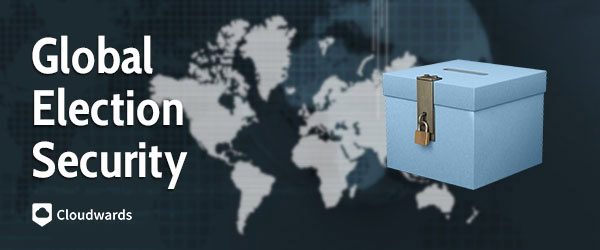Why Election Security Now Depends on Big Tech’s Data Centers

This Deep Dive was originally sent on September 30th, 2025.
Election Day 2024 was supposed to be chaos.
Foreign adversaries launched massive cyberattacks targeting voter registration sites. Millions of malicious requests flooded servers every second.
The goal? Crash the systems right when Americans needed them most.
Instead, something remarkable happened: nothing.
Voters registered. Websites stayed online. Democracy worked.
Cloudflare blocked several DDoS attacks on political and election sites during Election Day 2024 [1]. Over 6 billion malicious HTTP requests targeted US election-related websites in just 24 hours.
Yet voters barely noticed.
Why? Because cloud providers had quietly become the invisible guardians of democratic processes worldwide.
Your vote’s integrity now depends as much on Amazon’s data centers, Microsoft’s AI detection systems, and Cloudflare’s network as it does on traditional poll workers and ballot boxes.
Yup, welcome to the new reality of election security, where Jeff Bezos and Satya Nadella might have more influence over your democratic participation than your local election official.
2024 marked the biggest electoral year in history, with over 60 nations holding critical elections. Cloud infrastructure has become the backbone supporting everything from voter databases to real-time disinformation detection.
Understanding what Cloudflare is and how cloud computing powers election security isn’t just tech trivia anymore. It’s essential knowledge for any citizen who wants to understand how democracy actually works in the digital age.
But here’s the fascinating paradox: the same technologies that protect elections also create new vulnerabilities that barely existed a decade ago.
Cloud providers are already deeply embedded in election security. That ship has sailed. The challenge now is ensuring they can handle the responsibility when democracy itself hangs in the balance.
So how did we get here? And how worried should we be?
How Cloud Infrastructure Became Election Infrastructure
The transformation happened gradually, then suddenly. State and local election officials with limited resources discovered cloud services could provide enterprise-grade security for a fraction of the cost.
With cybercrime impacting the global economy by $7 trillion annually [2], robust security became essential. Election systems became natural candidates for cloud protection.
COVID-19 accelerated the shift when remote voting and digital engagement became necessities. Election officials suddenly managed complex digital systems while under scrutiny from adversaries and an increasingly polarized public. No pressure at all, am I right?
Today’s elections run on cloud services: voter databases hosted on AWS, secure communications through encrypted messaging platforms, and websites defended by content delivery networks that absorb massive cyberattacks. The U.S. Cybersecurity and Infrastructure Security Agency, or CISA to friends and family, published a toolkit specifically recommending services like Cloudflare’s DDoS protection [3].
So who’s actually providing these critical services?
🔒This is where the free preview ends.
Join thousands of professionals who get the complete story
Our Deep Dive subscribers rely on these investigations to stay ahead of emerging threats and make informed decisions about technology, security, and privacy.
✅ Complete access to this investigation
✅ All future Deep Dive reports
✅ Searchable archive of past investigations
✅ No ads, no sponsored content
✅ Cancel anytime


